Author: Jake Huolihan
Top-cropping is a method used by some traditional European breweries that involves skimming the kräusen off of the top of fermenting beer, the primary purpose being to reuse the yeast to ferment a future batch. However, some have posited that removing the kräusen also results in beer being less harsh and thus more pleasant to drink.
In addition to yeast, kräusen contains dead cells, wort proteins, and hop derived compounds, much of which settles in the trub once fermentation is complete. Proponents of top-cropping make the plausible argument that not all of this stuff falls out of solution, and its presence in beer can lead to undesirable characteristics, hence removing it can improve beer quality.
As a means of harvesting yeast, top-cropping appears to have fallen largely out of favor with brewers, who tend to worry little about kräusen remaining in their beer. With one past xBmt showing tasters could not reliably tell apart a Munich Helles where the kräusen was skimmed during fermentation from one that was left alone, I decided to test it out again on a classic British ale.
| PURPOSE |
To evaluate the differences between a Strong Bitter that had the kräusen regularly skimmed during fermentation and one that was fermented with the kräusen intact.
| METHODS |
For this xBmt, I went with a Strong Bitter recipe I’ve brewed many times and have had good success with.
Calamity
Recipe Details
| Batch Size | Boil Time | IBU | SRM | Est. OG | Est. FG | ABV |
|---|---|---|---|---|---|---|
| 5.5 gal | 30 min | 44.8 | 8.6 SRM | 1.055 | 1.016 | 5.12 % |
| Actuals | 1.055 | 1.016 | 5.12 % | |||
Fermentables
| Name | Amount | % |
|---|---|---|
| Root Shoot English Pale Ale #281 | 11.5 lbs | 93.88 |
| Root Shoot Cara Ruby | 8 oz | 4.08 |
| Root Shoot Specialty Roast | 4 oz | 2.04 |
Hops
| Name | Amount | Time | Use | Form | Alpha % |
|---|---|---|---|---|---|
| Loral | 40 g | 30 min | Boil | Pellet | 10.5 |
| East Kent Goldings (EKG) | 30 g | 15 min | Boil | Pellet | 5 |
| East Kent Goldings (EKG) | 30 g | 5 min | Boil | Pellet | 5 |
Yeast
| Name | Lab | Attenuation | Temperature |
|---|---|---|---|
| Pub (A09) | Imperial Yeast | 72% | 32°F - 32°F |
Notes
| Water Profile: Ca 91 | Mg 0 | Na 8 | SO4 149 | Cl 55 |
Download
| Download this recipe's BeerXML file |
I started my brew day by collecting RO water, adjusting it to my desired profile, then flipping the switch on my controller to get it heating up, after which I weighed out and milled the grain.
With the water properly heated, I mashed in then checked to ensure it was at my target temperature.
While waiting on the mash, I prepared the kettle hop additions.
Once the 60 minute mash rest was finished, I collected the sweet wort in my kettle.
The wort was then boiled it for 30 minutes with hops added as stated in the recipe.
When the boil was finished, I quickly chilled the wort with my IC.
A refractometer reading showed the wort was right at my intended OG.
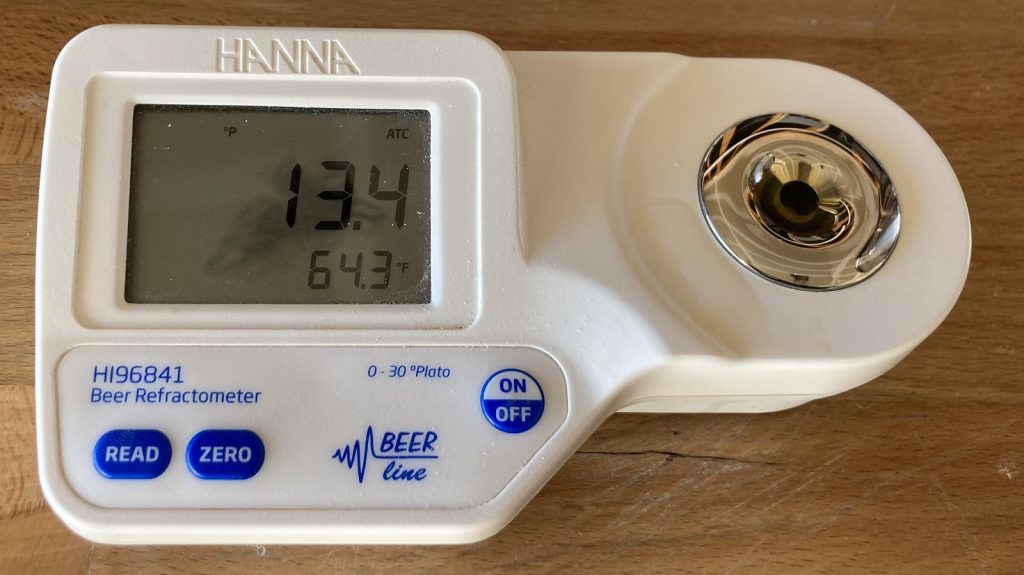
The chilled wort was then evenly split between two fermentation vessels.
Next, I used my glycol unit to finish chilling the worts to my desired fermentation temperature of 66°F/19°C before pitching a single pouch of Imperial Yeast A09 Pub into each.
The following morning, I used a sanitized spoon to remove as much kräusen as possible from one batch while the other was left alone; this process was repeated every 12 hours over 3 days for a total of 6 skims, at which point activity had waned. It should be noted the lid for the non-skimmed beer was removed for the same amounts of time as the skimmed batch to ensure similar levels of air exposure.
Hydrometer measurements taken 11 days into fermentation showed both beers finished at the same FG.
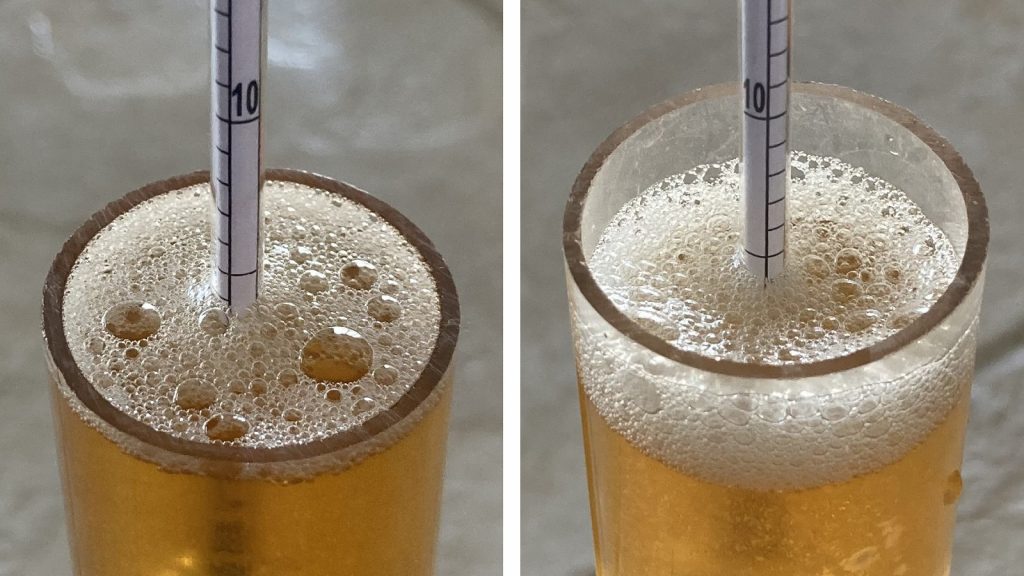
I left the beers alone for 5 days before pressure transferring them to CO2 purged kegs.
The filled kegs were placed in my keezer and left to carbonate for a couple weeks before they were ready for evaluation.
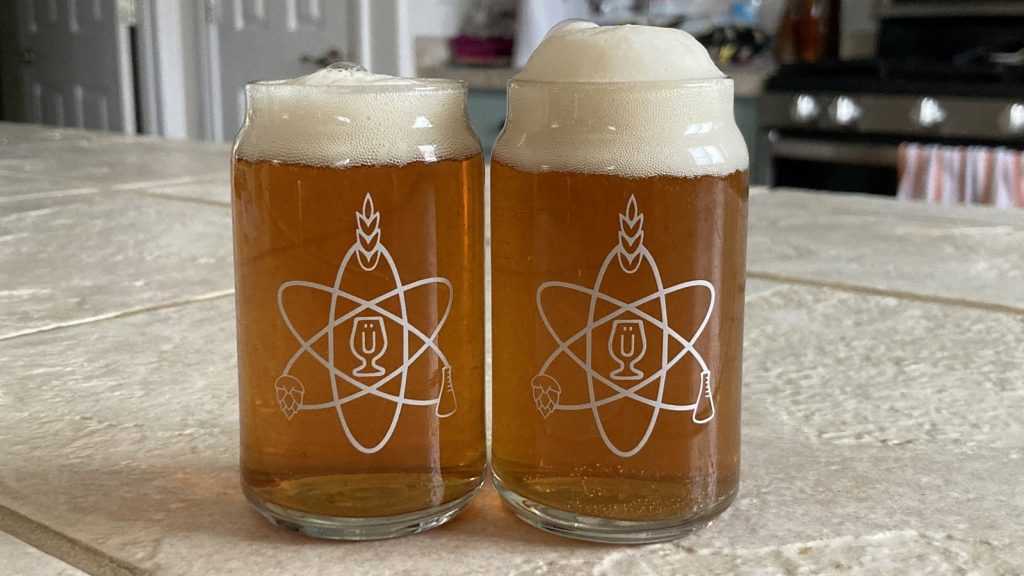
| RESULTS |
Due to social distancing practices as a result of the COVID-19 pandemic, data for this xBmt was unable to be collected in our typical manner. As such, temporary adaptations were made involving the author completing multiple semi-blind triangle tests in as unbiased a way as possible.
Utilizing 4 opaque cups of the same color where 2 were inconspicuously marked, one set was filled with the skimmed kräusen beer while the other set was filled with the beer where the kräusen was left intact. For each triangle test, 3 of the 4 cups were indiscriminately selected, thus randomizing which beer was the unique sample for each trial. Following each attempt, I noted whether I was correct in identifying the unique sample. Out of the 10 semi-blind triangle tests I completed, I needed to identify the unique sample at least 7 times (p<0.05) in order to reach statistical significance. In the end, I correctly identified the unique sample just 5 times (p=0.21), indicating my inability to reliably distinguish a Strong Bitter where the kräusen was skimmed during fermentation from one where the kräusen remained in the beer.
To my palate, these beers were identical in every way, forcing me to randomly guess on my series of triangle tests. This being my go-to Strong Bitter recipe, I was expectedly very pleased with how it turned out!
| DISCUSSION |
During active fermentation, myriad compounds present in wort rise to the top of the beer to form what brewers refer to as kräusen. While this substance is largely made up of yeast, it also contains stuff some believe contributes a harsh character to beer, leading them to skim as much of it off as possible. My inability to reliably distinguish a Strong Bitter where the kräusen was skimmed during fermentation from one where the kräusen remained in the beer suggests any differences were too small for me to perceive.
There’s no denying that kräusen contains perceptibly unpleasant compounds, all one has to do is taste some to know this, and the fact nearly all craft breweries today don’t skim it off suggests it likely settles out at the end of fermentation. Furthermore, the act of opening the fermenter to remove the kräusen increases the risk of exposing the beer to both oxygen and potential contaminants.
Even though I was able to tell apart the beers from the last xBmt on this topic, I haven’t adopted the method of removing the kräusen during fermentation. Whatever impact it might have on beer quality is likely small enough as to be largely unnoticeable, and even in more delicate styles, I feel the slight sharpness it contributes can be modified with recipe design.
If you have any thoughts about this xBmt, please do not hesitate to share in the comments section below!
Support Brülosophy In Style!
All designs are available in various colors and sizes on Amazon!
Follow Brülosophy on:
FACEBOOK | TWITTER | INSTAGRAM
If you enjoy this stuff and feel compelled to support Brulosophy.com, please check out the Support page for details on how you can very easily do so. Thanks!



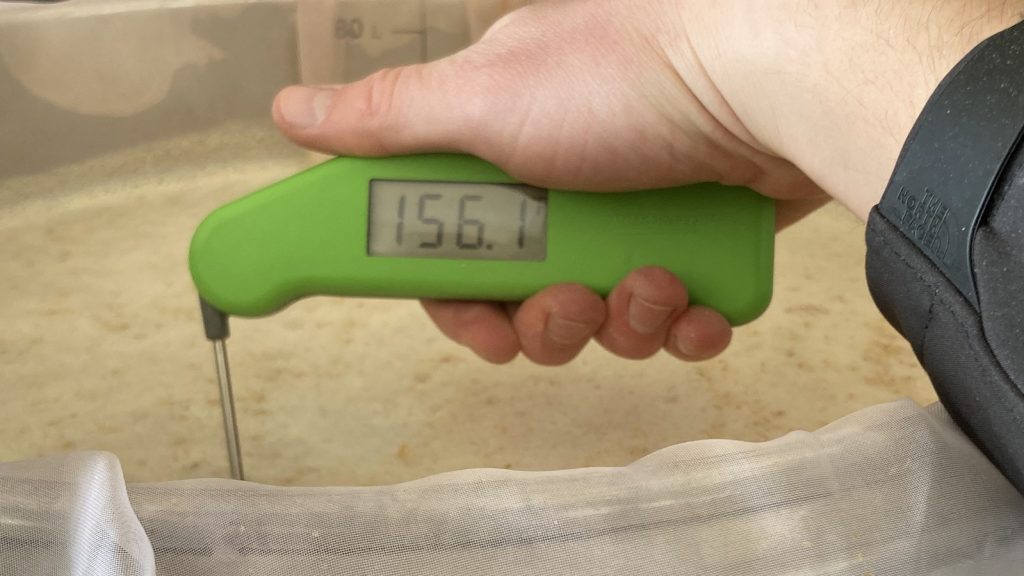

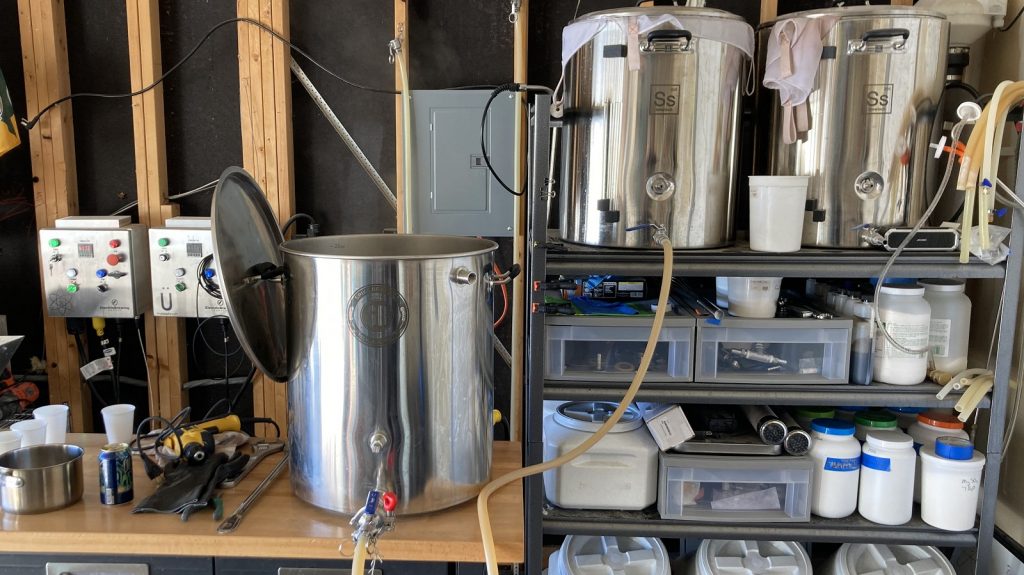
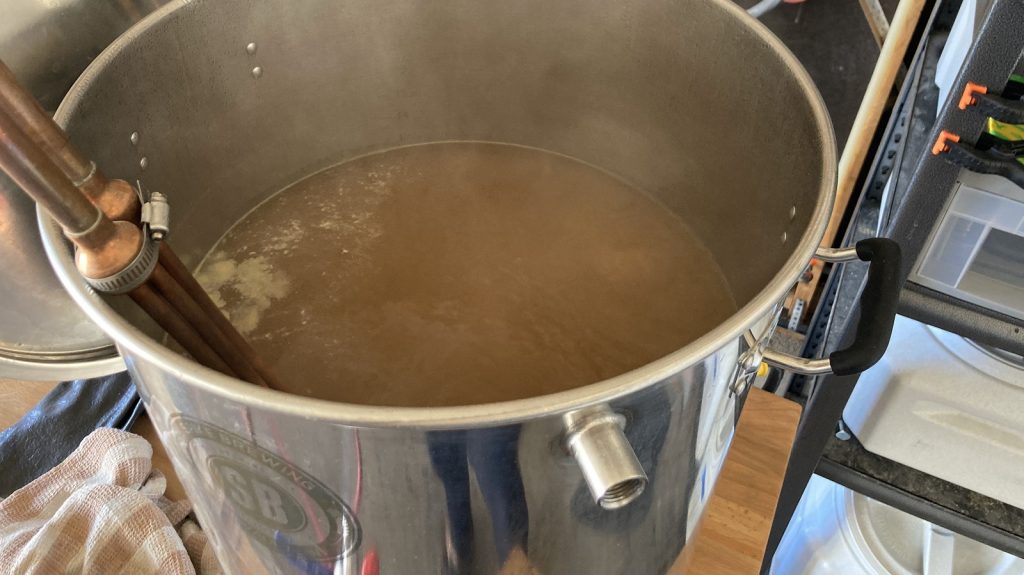
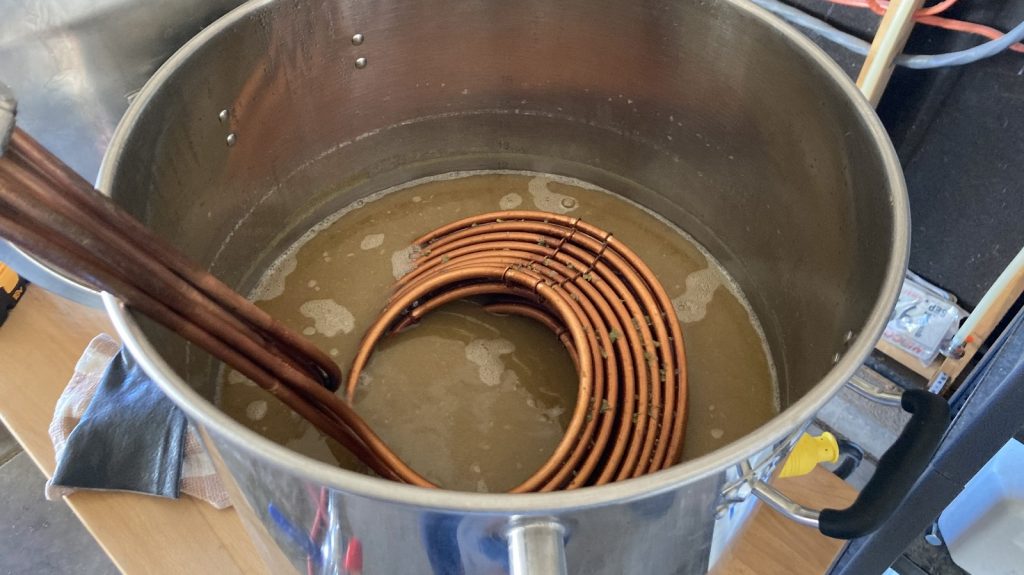

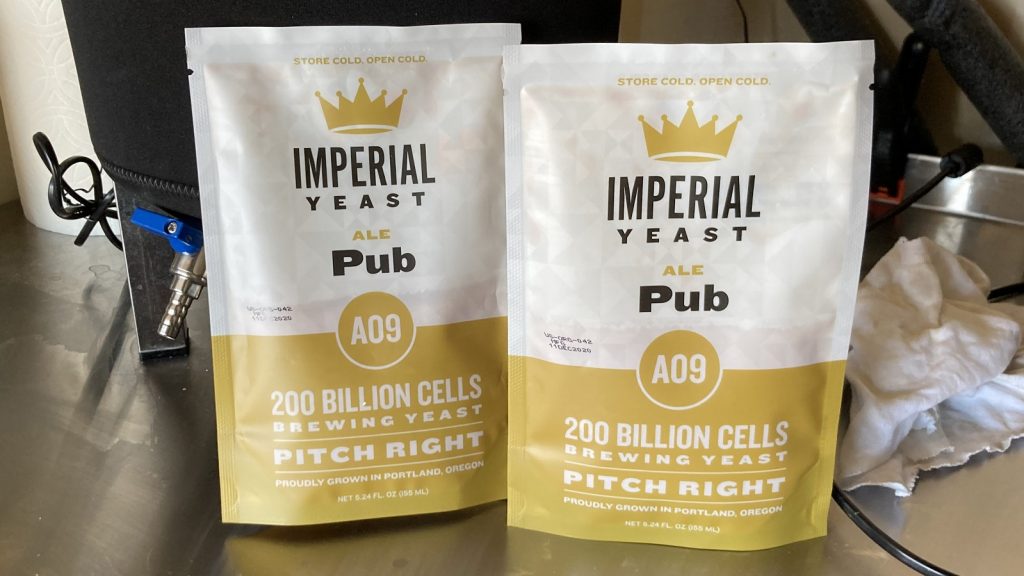
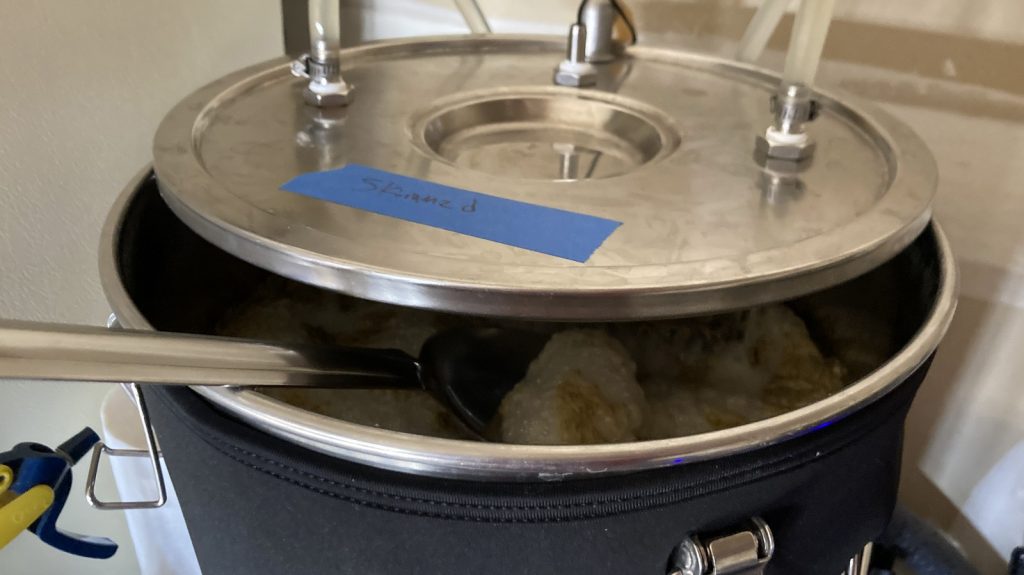












6 thoughts on “exBEERiment | Impact Skimming Kräusen During Fermentation Has On Strong Bitter”
Nice experiment… on a somewhat similar note have you done an experiment testing whether skimming the hot break at the beginning of the boil makes a difference? I’ve heard some say that it does.
@jake , you said you perform a pressure transfer, yet you’re using ss brewtech buckets. What’s your process?
I’m sure Jake will chime in, but some modify the lid with a bulkhead compression fitting to give you a Tri clamp port (KegFactory sell this with their Brewmaster Edition Brew Bucket).
If yours doesn’t have this you can easily fit a weldless TC bulkhead fitting after widening the blow off port, and as it doesn’t come in contact with beer directly the screw side of it isn’t so much an issue with cleaning/sanitation.
The SS Brewbucket will easily support 1-2psi which is all you need, particularly if you have gravity working for you. In this case gravity does the work and a trickle of CO2 gas fills the vacuum that otherwise would be created to keep the flow going.
I recently upgraded my ss brew bucket to do just this. They explain everything here:
https://ssbrewtech.zendesk.com/hc/en-us/articles/210211086-Can-I-perform-a-pressurized-transfer-with-the-Brew-Bucket-s-flat-lid-
As AntonioB says, the pressure you run into the top of the bucket during transfer is at most 1-2 psi – just enough to replace the void as the beer drops out of the bucket into your keg.
I think it would have a bigger impact on a tasteless beer, like a mega-lager. Good article.
Good one
Keep it up!